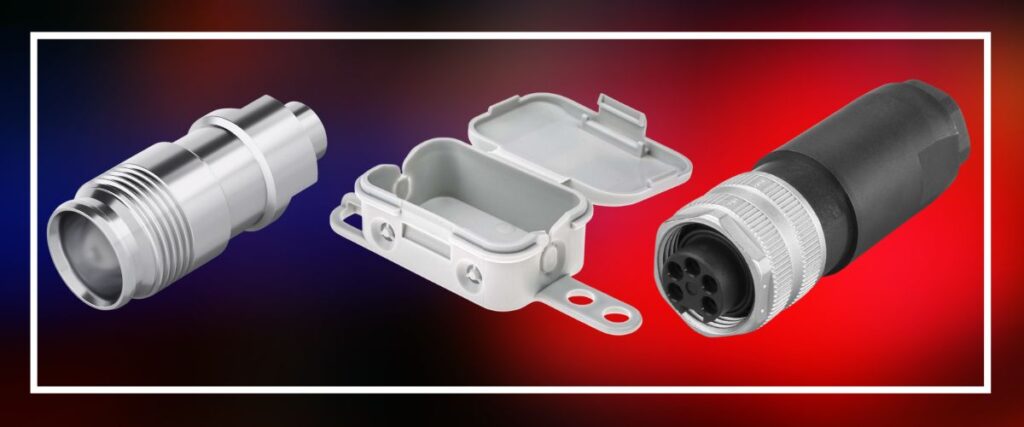
In the interconnected world of electronics and modern building infrastructure, the reliability of every system — from lighting circuits to television signals — depends on how well its components are installed and connected. Two crucial elements that often go unnoticed yet play an essential role are coaxial cable connectors and the process of wiring a junction box for lighting.
Both serve distinct but equally important purposes. While coaxial connectors ensure high-quality signal transmission for multimedia and communication systems, properly wired junction boxes guarantee electrical safety, functionality, and convenience for residential and commercial lighting networks.
This blog explores both — their functions, importance, and best practices — in the context of today’s electronic and electrical applications.
Understanding Coaxial Cable Connectors
Coaxial cable connectors are specialized fittings used to join coaxial cables, enabling the transmission of radio frequency (RF) signals with minimal loss or interference. Coaxial cables have a unique layered structure consisting of a central conductor, dielectric insulator, shielding layer, and protective outer jacket.
Connectors designed for these cables must maintain impedance matching (typically 50Ω or 75Ω) and ensure secure physical contact between devices, transmitters, or antennas. Poor connections can cause signal degradation, noise, or even total signal loss — which is why high-quality connectors are critical in modern electronic systems.
Types of Coaxial Cable Connectors
There are several types of coaxial connectors, each optimized for specific applications across the telecommunication, networking, and electronics industries:
- F-Type Connectors
Commonly used for television, satellite, and broadband internet connections. They provide a threaded, secure fit for reliable signal continuity. - BNC (Bayonet Neill–Concelman) Connectors
Used in CCTV systems, oscilloscopes, and RF test equipment. The bayonet locking design ensures quick connect/disconnect without signal loss. - RCA Connectors
Ideal for audio and video equipment in home entertainment systems. - N-Type and SMA Connectors
Found in professional RF, microwave, and antenna setups — suitable for high-frequency electronic communication devices. - Push-On Connectors
Convenient for quick installations where temporary connections are required.
Each type of coaxial connector maintains the shield integrity, minimizing electromagnetic interference (EMI), ensuring consistent impedance, and protecting the inner conductor from environmental effects.
Applications of Coaxial Cable Connectors in Electronics
Coaxial connectors are used across diverse electronic and communication systems, including:
- Television and satellite installations
- CCTV surveillance systems
- Wireless networks and radio transmitters
- RF testing and instrumentation equipment
- Signal amplifiers and antennas
In all these applications, the quality of the connector directly impacts the clarity and strength of the transmitted signal. For instance, using poor-quality or mismatched connectors can result in signal attenuation, distortion, or interference — unacceptable in professional electronic systems.
Best Practices for Installing Coaxial Cable Connectors
- Use Proper Tools: Use cable strippers, compression tools, and crimping devices designed for coaxial assemblies.
- Maintain Shielding: Ensure the cable’s braided shield is properly connected to the connector body to prevent EMI.
- Avoid Sharp Bends: Excessive bending damages the dielectric layer, affecting impedance and signal transmission.
- Check Compatibility: Match connectors with the correct cable type (RG6, RG59, etc.) and impedance rating.
- Secure Connection: Tighten connectors properly to maintain continuity and prevent moisture ingress.
By following these best practices, technicians ensure long-term reliability and consistency in RF and electronic communication systems.
Wiring a Junction Box for Lighting – Safe and Efficient Power Distribution
While coaxial connectors handle signal transmission, junction boxes serve as the central hub for distributing electrical power safely. When wiring a junction box for lighting, it’s essential to understand both the mechanical and electrical principles that govern circuit design and safety compliance.
A junction box is an enclosure that houses electrical connections, ensuring wires are organized, insulated, and protected against physical damage. Proper wiring ensures lights operate reliably and minimizes the risk of short circuits, overloads, or electrical fires.
Step-by-Step Guide to Wiring a Junction Box for Lighting
1. Safety First
Turn off the power supply at the circuit breaker before starting. Use a voltage tester to confirm no current is flowing through the wires.
2. Prepare the Junction Box
Select a box with adequate space for all wires and connectors. Use IP-rated or fire-retardant enclosures for enhanced safety, especially in commercial setups.
3. Identify the Wires
Typically, you’ll find:
- Live (Brown or Red)
- Neutral (Blue or Black)
- Earth (Green/Yellow)
Correct identification ensures proper wiring configuration for lighting control and power distribution.
4. Make Secure Connections
Use high-quality terminal blocks or wire connectors to join wires. For lighting circuits, connect the live wire from the power source to the switch and from the switch to the light fitting.
5. Organize and Secure Wires
Ensure no bare copper is exposed, and all connections are tight. Use cable ties or clips to maintain wire organization.
6. Close the Box
After testing continuity, carefully place the cover to protect internal connections from dust, moisture, or accidental contact.
Common Applications of Lighting Junction Boxes
- Home and Office Lighting Systems: For connecting ceiling lights, wall lamps, and dimmer circuits.
- Industrial Automation: Distributing power to lighting controls and sensors in factories or warehouses.
- Smart Lighting Systems: Integrating IoT-enabled controllers, dimmers, and motion sensors for energy efficiency.
- Outdoor and Landscape Lighting: IP66-rated junction boxes provide protection against water and dust ingress.
In electronic control systems, these junction boxes may also house relays, contactors, and circuit protection devices, offering complete control over lighting operations.
Why Both Components Matter
The coaxial cable connector and lighting junction box may serve different functions — one for signals and the other for power — yet both are essential to modern infrastructure. Together, they represent the seamless integration of electrical and electronic systems in homes, offices, and industries.
- Coaxial connectors ensure smooth communication between devices like TVs, routers, and cameras.
- Junction boxes ensure that lighting and electrical power are distributed safely and efficiently.
Both are fundamental for reliable performance in smart buildings, automation systems, and multimedia networks.
Final Thoughts
A well-connected system depends on high-quality components and proper installation. Coaxial cable connectors ensure high-fidelity signal transmission in your electronic devices, while correctly wired junction boxes keep your lighting circuits safe and efficient.
At Enrgtech UK, we supply an extensive range of coaxial connectors, electrical enclosures, junction boxes, and wiring accessories — all certified for safety and performance.
